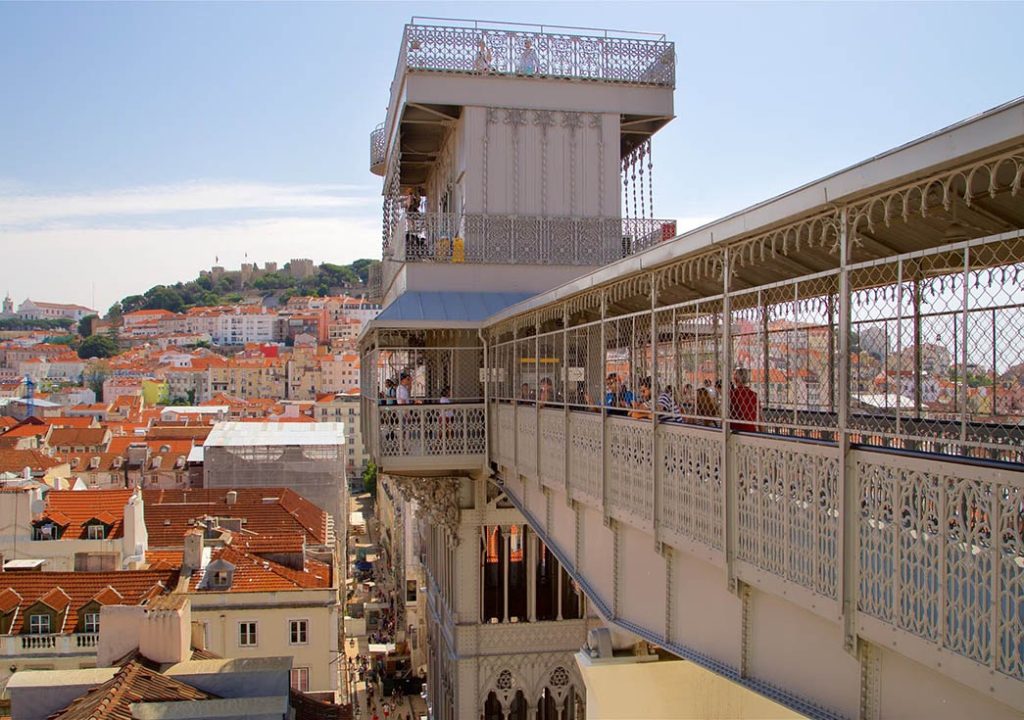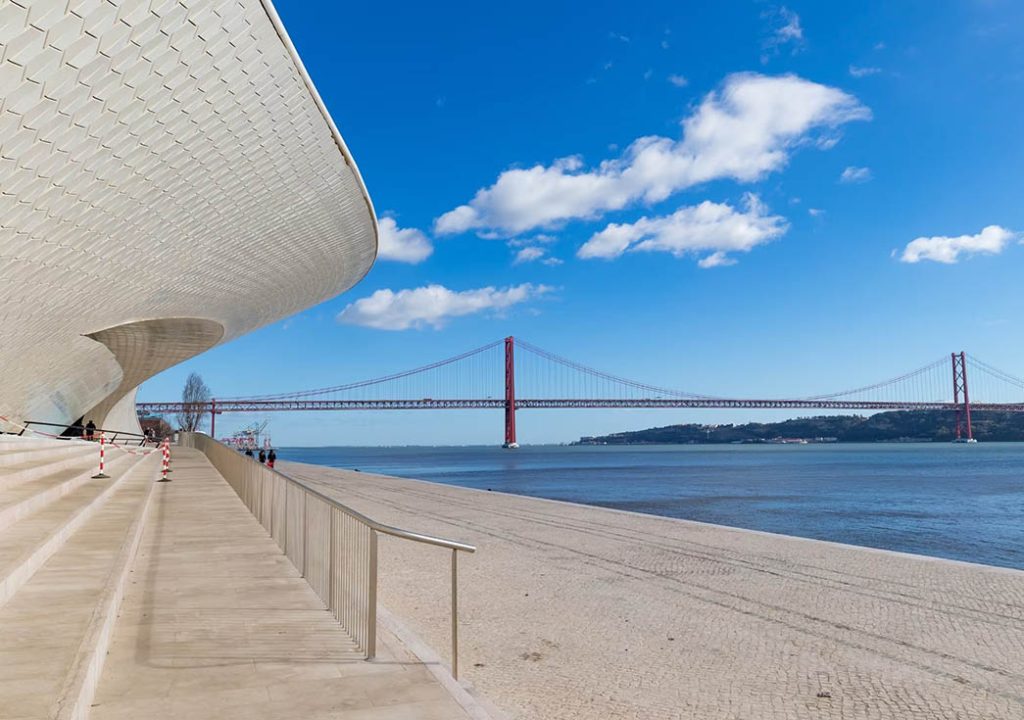I always feel a mix of excitement and curiosity when I step foot in a new city. Lisbon, with its rich charm and history, made a profound impression on me during my first visit. I’m excited to share the eight attractions in Lisbon that I enjoyed the most. I hope this provides some inspiration for your own travels.
1. Riding the Santa Justa Lift
One of the standout experiences during my time in Lisbon was visiting the Santa Justa Lift (Elevador de Santa Justa). This 19th-century iron lift is not only a functional piece of transportation but also a remarkable example of architectural ingenuity. It quickly became one of my favorite attractions in the city, and here’s why it stood out so much.
The Architectural Marvel
The Santa Justa Lift, designed by the Portuguese engineer Raoul Mesnier du Ponsard, was completed in 1902. Its intricate ironwork is reminiscent of the design elements seen in Paris’s Eiffel Tower, thanks to the same architectural influences that shaped its design. The lift stands at an impressive 45 meters tall, with its ornate Gothic Revival architecture giving it an almost fairy-tale quality. As I approached the lift, I was struck by its elegant iron lattice and neo-Gothic details, which set it apart from other structures in Lisbon.
The lift’s exterior is adorned with elaborate ironwork, including delicate arches and decorative flourishes. Its grandeur and historical charm make it a visual feast, and as I stood admiring the intricate details, I felt transported back to the early 20th century when it was first constructed.
The Ride Experience
Riding the Santa Justa Lift was an experience in itself. As the lift slowly ascended, I was treated to views of the surrounding buildings and streets gradually shrinking below. The lift’s interior features polished wooden panels and vintage-style ironwork, which create a nostalgic atmosphere reminiscent of early 20th-century elegance. The gentle hum of the lift’s machinery and the subtle sway as it climbs add to the sense of adventure.
Panoramic Views
Upon reaching the top, I was greeted with a breathtaking panorama of Lisbon. The observation deck provides a 360-degree view of the city, offering a perfect vantage point to take in the sprawling urban landscape. From this height, the red-tiled roofs of the Baixa district, with their neat rows and contrasting colors, stretched out before me. The contrast between the historic architecture and the modern cityscape was striking.
The view extends all the way to the Tagus River, where the sunlight danced on the water, adding a shimmering effect to the scene. The surrounding hills and the iconic landmarks of Lisbon, such as the São Jorge Castle, were also clearly visible from this elevated position.
Magical Sunset
One of the most memorable aspects of my visit was timing it for sunset. As the sun began to dip below the horizon, the entire city was bathed in a warm, golden glow. The setting sun cast long shadows and highlighted the intricate details of Lisbon’s buildings and streets. The sight of the city transitioning from day to night, with the sky painted in hues of orange, pink, and purple, was nothing short of magical.
The combination of the historical charm of the lift, the stunning architectural details, and the panoramic views made this experience unforgettable. Watching the sunset from the top of the Santa Justa Lift offered a unique perspective on Lisbon and provided a moment of serene beauty that was truly special.
The Santa Justa Lift is much more than just a way to get from one part of the city to another; it is a journey through time and a gateway to some of the most spectacular views Lisbon has to offer. Its historical significance, architectural elegance, and the unparalleled vistas it provides make it a must-visit attraction for anyone exploring this vibrant city.
2. Strolling Through Lisbon’s Charming Streets
Lisbon’s streets are a destination unto themselves. Whether it’s the colorful tiled pavements or the winding narrow alleys, every step felt like a journey through history. I particularly enjoyed wandering through the Alfama district, which retains much of its historic character. The narrow streets of Alfama led me to hidden restaurants, quaint bars, and artisanal shops, each corner offering a glimpse into the city’s past.
Another delightful experience was exploring the Belém district. The area is home to some of Lisbon’s most iconic landmarks, including the Belém Tower and the Jerónimos Monastery. Wandering between these historical sites, I was immersed in Lisbon’s rich cultural and historical tapestry.
3. Visiting São Jorge Castle
São Jorge Castle (Castelo de São Jorge) is undeniably one of Lisbon’s most iconic landmarks, and it became an unforgettable highlight of my visit. This historic fortress, perched majestically on a hilltop, offers both a glimpse into Portugal’s rich past and a panoramic view of the vibrant city below. Here’s a detailed account of my experience exploring this ancient citadel.
Historical Significance and Architecture
São Jorge Castle, dating back to the early 11th century during the Muslim period of the Iberian Peninsula, stands as a testament to Lisbon’s complex history. Originally built by the Moors, it was later captured by the forces of Portugal’s first King, Afonso I, in 1147. Over the centuries, the castle has seen various renovations and adaptations, reflecting different architectural styles and historical influences.
The castle’s layout is a labyrinth of ancient stone walls, turrets, and battlements. Walking through these old corridors, I could almost hear echoes of the past—the whispers of knights and soldiers who once roamed these very paths. The castle’s defensive walls, with their crenellated battlements, were both imposing and impressive. The stonework, weathered by time, adds to the fortress’s timeless charm.
Exploring the Castle’s Ancient Walls and Towers
As I explored São Jorge Castle, I marveled at the well-preserved walls and towers that have stood the test of time. The castle is a sprawling complex, with numerous towers and battlements offering different perspectives on the city. I climbed the steep stone staircases that lead up to the castle’s towers, each step taking me closer to breathtaking vistas.
One of the most memorable parts of my visit was the climb to the top of the castle’s highest tower. From this vantage point, the panoramic views of Lisbon’s skyline were simply spectacular. The red-tiled roofs of the city’s historic neighborhoods stretched out below, interspersed with the green expanses of nearby parks and the shimmering expanse of the Tagus River in the distance. The sight was both awe-inspiring and humbling, showcasing the vast beauty of Lisbon’s urban and natural landscape.

The Castle’s Gardens
The castle’s gardens offered a serene escape from the bustling city below. These beautifully landscaped spaces are dotted with lush greenery, colorful flowers, and tranquil fountains. I spent some time wandering through the gardens, soaking in the peaceful ambiance and enjoying the views. The gardens are designed not only for beauty but also to provide a contemplative space where visitors can reflect on the castle’s rich history while enjoying a moment of tranquility.
Sitting on a bench in one of the garden’s shaded alcoves, I found a spot where I could simply relax and take in the surroundings. The gentle rustling of leaves and the distant sounds of Lisbon created a soothing atmosphere. It was easy to imagine what life might have been like for the castle’s inhabitants centuries ago, enjoying these same views and the same sense of peace.
Cultural and Educational Aspects
During my visit, I also explored the small museum located within the castle grounds. The museum offers insightful exhibits on the castle’s history, including archaeological finds and historical artifacts. Through detailed displays and informative panels, I gained a deeper understanding of the castle’s significance in Lisbon’s history.
The museum’s exhibits provided context for the castle’s role throughout the centuries, from its strategic military importance to its function as a royal residence. The artifacts on display included ancient pottery, weaponry, and even medieval coins, each piece adding a layer to the rich historical tapestry of São Jorge Castle.
São Jorge Castle is more than just a historical site; it’s a journey through Lisbon’s past. Its commanding position offers unrivaled views of the city, while its ancient walls and towers tell the story of Portugal’s tumultuous and storied history. Exploring the castle’s architectural features, relaxing in its gardens, and learning from its museum exhibits made for a truly enriching experience. Whether you’re a history enthusiast, a lover of panoramic vistas, or simply looking for a peaceful retreat, São Jorge Castle is a must-visit destination that beautifully captures the essence of Lisbon’s heritage.
4. Exploring Historical Landmarks in Belém
The Belém district is another must-visit area in Lisbon, known for its significant historical landmarks. The Belém Tower (Torre de Belém), a 16th-century fortification located on the banks of the Tagus River, is a striking architectural piece. Standing at the top of the tower, I admired the scenic views of the river and the city beyond.
The Jerónimos Monastery (Mosteiro dos Jerónimos) is equally impressive, featuring elaborate Gothic architecture and intricate detailing. The monastery houses a museum with exhibits on Portugal’s maritime history. I spent several hours here, immersed in the rich historical and cultural context of the exhibits.
5. Tasting Portuguese Custard Tarts
No visit to Lisbon would be complete without sampling the local cuisine, and the Portuguese custard tart (Pastéis de Nata) was a highlight of my culinary adventures. At the famous Pastéis de Belém bakery in the Belém district, I indulged in these traditional pastries. The tarts were perfectly crispy on the outside and creamy on the inside, a delicious combination that left me craving more. Even at less renowned bakeries, the custard tarts were a delightful treat.
6. Exploring Lisbon’s Museums
Lisbon boasts a variety of excellent museums, and I particularly enjoyed visiting the National Museum of Ancient Art (Museu Nacional de Arte Antiga). The museum’s extensive collection includes artworks from medieval to modern times, showcasing Portugal’s rich artistic heritage. I spent hours exploring the exhibits, each piece offering a deeper understanding of the country’s artistic history.

Additionally, the Museum of Contemporary Art (Museu de Arte Contemporânea) provided a stimulating experience with its modern art collections. The museum’s exhibits offered a striking contrast to the traditional art I had seen, and the contemporary pieces challenged and expanded my perspective.
7. Riding Tram 28
The iconic Tram 28 (Eléctrico 28) is a unique way to experience Lisbon’s urban landscape. This historic tram route winds through many of the city’s most important neighborhoods, from the Baixa district to the Alfama district. Riding Tram 28, I enjoyed the rhythmic clatter of the tram and the ever-changing scenery outside the windows. The ride offered a nostalgic and immersive view ofLisbon, making it a memorable part of my visit.
8. Enjoying Lisbon’s Nightlife
Lisbon’s nightlife is vibrant and diverse. In the Baixa district and around Rossio Square (Praça do Rossio), there are numerous bars and restaurants. One evening, I dined at a traditional restaurant where I had the pleasure of listening to Fado music—a poignant and expressive form of Portuguese folk music. The soulful melodies of Fado captured the essence of Lisbon’s cultural spirit, providing a perfect end to my day.
My first visit to Lisbon was a captivating experience, filled with diverse and enriching encounters. From the breathtaking views atop the Santa Justa Lift to the historic streets of Alfama and the culinary delights of custard tarts, every attraction added a unique layer to my understanding and appreciation of the city. São Jorge Castle’s historical depth, Belém’s cultural heritage, Tram 28’s nostalgic charm, and the vibrant nightlife all contributed to a truly unforgettable trip. If you’re planning a visit to this enchanting city, I hope these recommendations help you discover the best of what Lisbon has to offer.